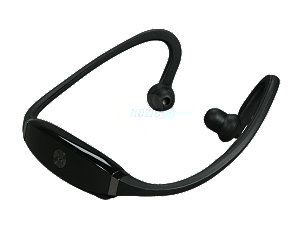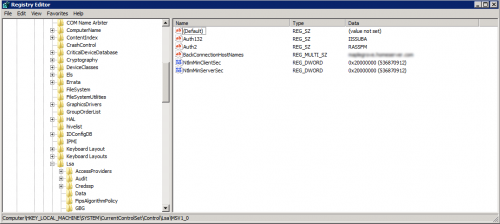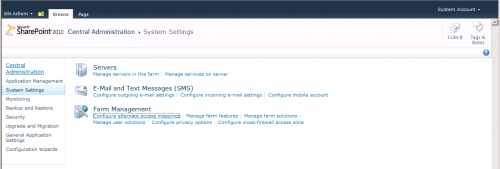|
|
|
Archive for the ‘Uncategorized’ Category
Monday, February 14th, 2011
It’s been a while since my last post. I’ve been very involved in a few projects lately, and just haven’t had the time to keep this site up-to-date. That will change. I’ve been heavily involved over at the Subsonic forums and have really gotten to a point where Subsonic is now fully integrated into our network environment. We’ve also been doing some hardware upgrades and are hoping to begin testing the new Ceton digital CATV 4 channel tuner soon. Also on the testing horizon will be the 2.5″ Segate hybrid laptop hard drive. Our old HP tablet was part of a class action law suit, and we have applied for the replacement ASUS EeePC tablet as part of that settlement. If and when it arrives, I hope to use the hybrid drive in the new tablet to bump the performance a bit.
So, there you have it. We do intend to pay more attention to this site and hope that much of what we do will be based on your feedback and participation. If you have a comment or question, speak up and we’ll try to accomodate your interests.
Posted in Uncategorized | No Comments »
Monday, October 25th, 2010

I have stated in previous posts that I firmly believe that the focus today is shifting from what can be done on individual computers, to developing new synergies that are possible with increasingly sophisticated home networks. The challenges are time consumming, and perhaps a bit daunting for the average user, but the rewards are definitely worth the time and investment.
My latest project has been to leverage the integration of my cell phone into the network. We have a rather large music library, a little over 180GB on 1627 albums containing 24,088 songs. Granted there are probably a few duplicates in there, but it’s still rather sizeable. The last few months, I’ve been focused on organizing the libaray and figuring out how to access it in the most convienient way. To that end, we have been experimenting with Subsonic, http://www.subsonic.org/ a Java based media player that’s available for free download. Donations are accepted but not required, unless like me you install the Android app on your cell phone. The phone apps will expire after a trial period unless you donate and recieve a license. The terms are more than reasonable and the license can be used on any number of servers you setup.
We are currently running two servers, our Windows Home Server is a DIY AMD quad core 65W CPU with 4GB ram and 4 2TB hard drives. The second server runs Windows Server 2008R2 on a 3Ghz Xeon quadcore with 8Gb ram and 4 hard drives of varying sizes for about 6TB of storage. We have a Subsonic server on each box that can be accessed from both inside and outside the network by using different port numbers in the URL.
The real bonus is that I can access either server and stream music to the phone wherever I get a cell signal. We frequently take long road trips as a family, and I’m sure everyone is familiar with the battle of trying to find something to listen to. Problem solved! We can now access our entire library and stream the music to the car audio system over bluetooth. Not to mention that the same can be done with internet radio. I’m currently playing with Grooveshark http://listen.grooveshark.com/ which works well, but I haven’t yet fully evaluated the interface or the terms of use. For now it works and is still free, but I’m not sure what happens once the trial period ends.
So, for now, we have centralized the storage and distribution of our media library onto our servers and have the means to access the content both at home and on the road. Subsonic does a great job as as music player, although it does have some weaknesses that need to be addressed. I’m still trying to decipher how to use the players that are generated for each user, and I have yet to figure out how to manage playlists. Even though there are still some quirks to work out, my teenage daughter like it wellenough that she’s given up her iTunes for the subsonic player. I’m pretty sure that’s a good sign. Perhaps not an objective evaluation, but nonetheless a significant one.
In addition, with some research and tweaking, the player can also stream video. The video setup can be a bit tricky, but if you have a basic understanding of transcoding it’s doable. We have even achieved some success streaming video over 3g to my EVO.
Now more than ever, the purchase of any new hardware has to take into consideration how it will fit into the overall scheme of your network. On a side note, the good old Linksys wireless router has seen better days and it’s time to go to router heaven. It just goes belly up too often now under any sustained media streaming. We have a Netflix enabled Blue Ray player that just drive the router into the ground after about 30 min. I’m pretty convinced that there isn’t really anything out there that can be called a rock solid dependable wireless router. I’ve killed half a dozen of them now. So not knowing any better, I just ordered a NETGEAR WNDR3700-100NAS 802.11a/b/g/n Rangemax 2.4/5GHz Simultaneous N600 Dual Band Wireless Gigabit Router/ USB port from Newegg. Hopefully this one will do the job, but I remain skeptical.
Sadly, I now just order everything from Newegg as I find they are consistently price competitive and their customer service is absolutely top shelf. I’ve got to get back in the habit of shopping around more. If you have any suggestions, please share.
Next up, we really need to get to work on the family room project. I want to wire cat 6 throughout the room and redo the electrical outlets. I also want to run the speaker wiring for 7.1 surround. The hope is to set up a 58″ Panasonic Plasma and tie everything together with an HTPC running a Ceton tuner card. that should be quite a challenge, but a real kickbutt project when done! In the meantime, I’ll be playing around with lightweight bluetooth headsets in an attempt to integrate voice command over the network. the ideaq is to find a lightweight good quality head set that allows me to interact with the network on many levels through voice commands. In theory, I should be able to tell my system to play the music I’d like to hear on the headset from anywhere around the house, while perhaps recieving email notifications and being able to select which ones I’d like read to me without having to go to the keyboard.
We are the Borg.
Posted in Uncategorized | No Comments »
Wednesday, September 1st, 2010
SharePoint 2010 incorporates many of the security features found on the Server 2008 R2 platform. While this keeps security holes tight it raises the amount of user awareness needed to properly configure some of the default security issues that arise in SharePoint.
In particular, LSA Loopback security has been one of the number one reasons users cannot initiate the search server correctly throughout the farm. The Loopback check was introduced back in Windows Server 2003 SP1 as a means to prevent unauthorized access through unrecognized domains or DNS paths. To prevent hackers from using false DNS and CNAMEs to access sites LSA Loopback watches and blocks any unauthorized DNS access. Especially in a deployment environment and not a production environment, many new users have disabled the Loopback check all together which has restored their search services. To remedy the situation properly though and maintain security, it is advised to follow the followng procedure to add your domain to a trusted list to enable search and keep this security feature in place:
Navigate to REGEDIT and access the following path: HKEY_LOCAL_MACHINE\System\CurrentControlSet\Control\Lsa\MSV1_0
Right click the key and add a new Multi String value. Set its name to BackConnectionHostNames and set the value to the DNS or CNAME you want to successfully authenticate.

Once you have added these values correctly LSA will properly authenticate your DNS name and search will begin functioning. But we aren’t in the clear yet. Alternate Access Mappings or AAM is a feature found in SharePoint and IIS that configures alternate routes for accessing your SharePoint server. By configuring AAM you can define what names are from the Internet, Extranet, Intranet, Trusted Zones etc. To do so, navigate to SharePoint 2010 Central Administration, select System Settings, and choose configure Alternate Acccess Mappings. Here you can select your collection and create zones for different addresses .

Now you have properly configured accessing SharePoint from different addresses and you should stop recieving event viewer messages informing you of these issues. Now if only Microsoft did a better job of documenting these things in the Health analyzer so many users wouldn’t be stranded, but one step at a time right?
Posted in Uncategorized | No Comments »
Sunday, July 18th, 2010
OOMA – Several years ago I was one of the first to sign up for VOIP. We have family all accross the country and the old land line POTS long distance bills were a real downer. I switched the house phone to Vonage and never looked back. At first there were a few issues, in the early days the call quality was erratic, and you had to use the area code to dial local numbers. Fortunately these were fixed quickly and for many years I was very happy with the Vonage service. In fact I have no complaint with Vonage, other than I had to pay for it.
Enter OOMA. We all have cell phones now on the Sprint family everything 1500 data plan, but old habits die hard and giving up the old home number even though I was paying about $25 per month, dropping the land line just wasn’t going to pass the family vote. I had done a lot of reading about OOMA and found that most of the reviews pretty much had to be interrpreted by evaluating the knowledge level of the reviewer. Newbies had problems, experienced users liked it.
Newegg had it on sale one day for $185 and the usual no tax no shipping, so I took the plunge. Cut the shipping box open plug it into an outlet, connect to the network switch, activate online, make calls, no more phone bill! Pretty simple. Quality is just as good as Vonage or any POTS line and in 10 months I’ll break even. after that it’s all savings. There are monthly taxes and fees that come to about $3.50/month but I’m still up $21.50.
Now when I see the Vonage comercials with everyone throwing their Verion bill on the pile, I just smile because, now, I’m throwing my Vonage bill on the heap.
Posted in Uncategorized | No Comments »
|
|
|
|


